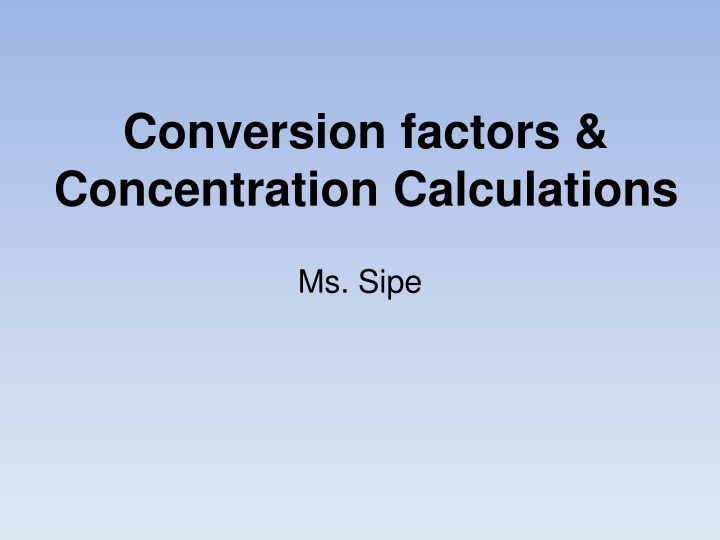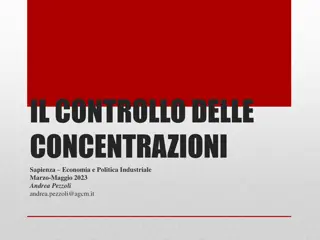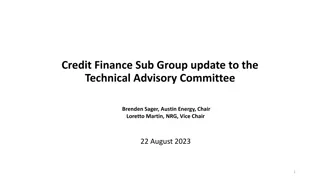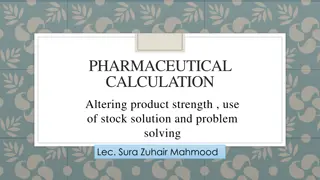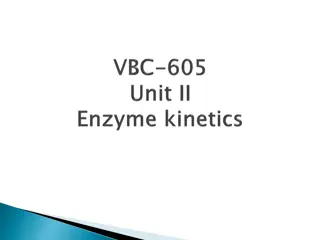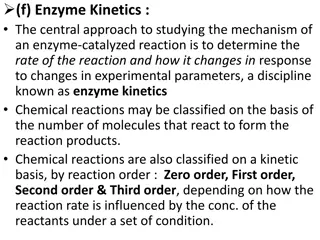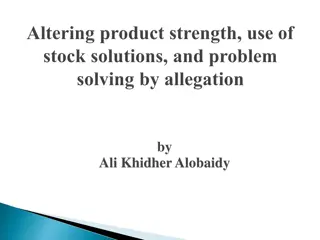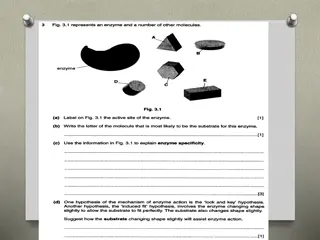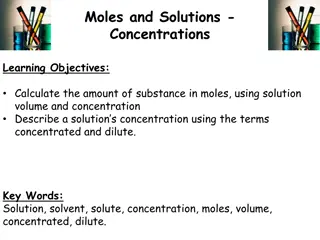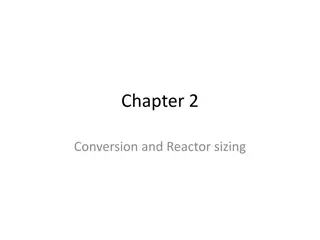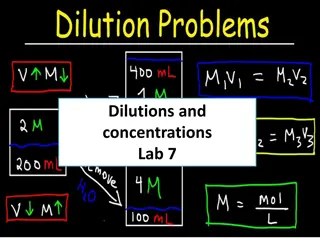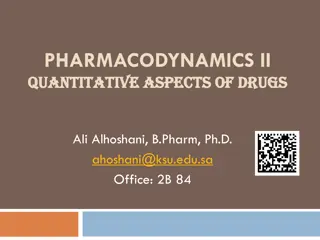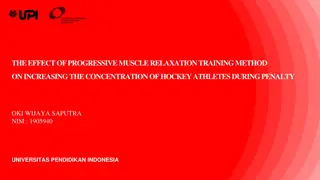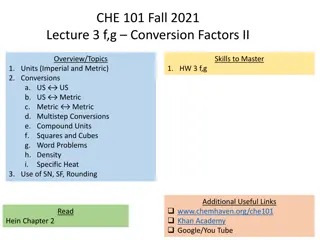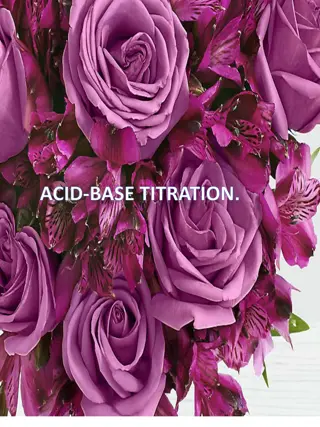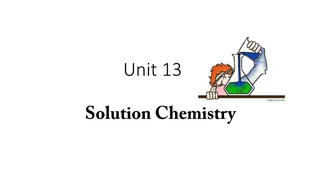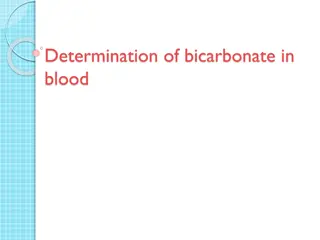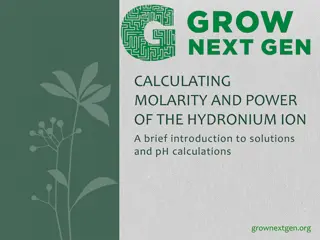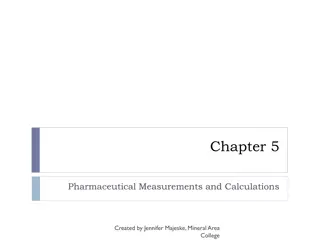Conversion Factors & Concentration Calculations: Understanding Environmental Science
The unit explores conversions between units and unitless measures in the context of environmental science. It covers topics such as pollutants in different mediums, units and prefixes, and practical examples with detailed calculations. This guide aims to enhance comprehension of concentration calculations and conversion factors vital in environmental science and related disciplines.
Download Presentation

Please find below an Image/Link to download the presentation.
The content on the website is provided AS IS for your information and personal use only. It may not be sold, licensed, or shared on other websites without obtaining consent from the author.If you encounter any issues during the download, it is possible that the publisher has removed the file from their server.
You are allowed to download the files provided on this website for personal or commercial use, subject to the condition that they are used lawfully. All files are the property of their respective owners.
The content on the website is provided AS IS for your information and personal use only. It may not be sold, licensed, or shared on other websites without obtaining consent from the author.
E N D
Presentation Transcript
Conversion factors & Concentration Calculations Ms. Sipe
What are we doing and why??? The calculations introduced in this unit involve conversions between units and unitless measures. In more understandable terms Environmental Science is often interested in quantities of pollutants in a larger medium which requires this type of calculation. For example, [Hg] in L H20 or in the flesh of tuna Say 15 mg/L Hg in one of these samples mg/L is a UNIT, but we might be asked for %, which is UNITLESS First some necessary background information
Units & Prefixes: Smaller Larger 10-12 10-9 10-6 10-3 10-2 100 103 106 109 1012 pico nano micro mili centi BASE kilo Mega Giga Tera p n m c Meter Liter k M G T pm nm um mm cm m km Mm Gm Tm Unit-less Calculations: Smaller Larger ppb ppm % Parts per billion Parts per million Parts per thousand Parts per hundred 1/1,000,000,000 1/1,000,000 1/1,000 1/100 1/109 1/106 1/103 1/102 Other useful things to remember: If converting unit unitless get rid of units 1st, and then worry about the # s/math dH20 = 1g/mL so 1g = 1mL; therefore 1kg = 1 L. Also, 1 kg = 1000g
Examples 1. You are given a ruler with tape covering 3 inches, what % of the ruler is covered? 2. Express 6000ppm Cu in % 1st STOP AND THINK!!! How would you attack these? What do you KNOW? What is GIVEN? What is WANTED? What do you have to do to get from the given to the wanted?
ExamplesThe Answers! 1. You are given a ruler with tape covering 3 inches, what % of the ruler is covered? The ruler is 1 ft in length and you know that there are 12 inches in a ft So, 3in/12in = (units cancel & reduce) = 25/100 (multiply numerator & denominator by the same factor to make the denominator 100) 25/100 = 25%, by definition of % which means out of 100 2. Express 6000ppm Cu in % 6000/1,000,000 = X/100 must move dec 4 places to left to change 1,000,000 to 100 OR 6000/106 = X/102 = 0.6% spread between 106 and 102 is 4, move the decimal 4 spaces toward the larger exponent.
A Little Guided Practice Convert the following: 1. ng/mg to ppm 2. mg/kg to ppm 3. ug/kg to ppb 4. Mg/g to 0/00 5. 50ug/mL Cu (aqueous) to ppb
A Little Guided Practice The Answers! Convert the following: 1. ng/mg to ppm ng/mg= 10-9/10-3 = 10-6 = 1/106 = ppm 2. mg/kg to ppm mg/kg = 10-3/103= 10-6 = 1/106 = ppm 3. ug/kg to ppb ug/kg = 10-6/103 = 10-9 = 1/109 = ppb 4. mg/g to 0/00 mg/g = 10-3/100 = 10-3 = 1/103 = 0/00 5. 50ug/mL Cu (aqueous) to ppb 50ug/mL (10-6) = 50(1/106) = ppm Then, set up proportion and solve: 50/106 = X/109 = 50,000ppb Cu
Now lets tackle some problems on your own You may work independently or in small groups. It is expected that all students know how to do these problems and can demonstrate their understanding on an assessment. Maybe solve the problems independently, and then check your answers with your peers and discuss discrepancies??? I will be circulating to help you trouble shoot. Do not be frustrated if you are struggling; These are unfamiliar calculations and will get easier with practice!
